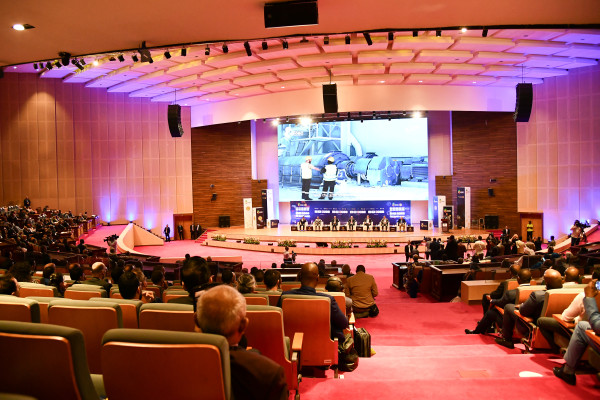Technical and environmental studies for the CWP Global-led AMAN green hydrogen project in Mauritania are at advanced stages, the company shared during the Energy Capital&Power-organized MSGBC Oil, Gas&Power 2023 (https://EnergyCapitalPower.com) conference this week.
During a panel discussion titled, Green Hydrogen: A Vector for Industrialization, Ramy Lotfy, Chief Commercial Officer at CWP Global, explained that the company is advanced in its technical assessments. “We have more than 18 months of wind data, have advanced environmental studies and have a number of potential off-takers that have been identified.”
Currently, Mauritania has a strong pipeline of projects underway. Germany’s Conjuncta is developing a $34 billion green hydrogen facility alongside UAE’s Masdar and Egypt’s Infinity Power while CWP Global is implementing the $40 billion AMAN project. At the same time, Total Eren and Chariot are developing the 10 GW Project Nour, showcasing the feasibility for large-scale developments in the country.
For CWP Global’s Lotfy, Mauritania is a strategic market, and “commercially, green hydrogen could be attractive and make Mauritania a pioneering industry.”
Given the country’s immense solar and wind resources; strategic location to international markets; and growing efforts to industrialize, Mauritania has emerged as a future green hydrogen economy. By 2035, the country’s green hydrogen production potential is estimated to be above 12 million tons per annum, resources which will drive regional industrialization and economic growth.
Speaking during a presentation ahead of the panel discussion, Abdoullah Diop, Permanent Secretary at the Extractive Industries Transparency Initiative: Mauritania, shared that, “In Mauritania, there is a high potential of 2,000 to 2,300 MWh/m2 per year for solar energy, placing the country in a leading position in the race for green hydrogen.”
Developing the region’s solar and wind resources through green hydrogen stands to help Mauritania diversify its energy mix and reduce its carbon footprint while fueling a new era of economic growth and development.
Khroumbaly Lehbib, Advisor for Hydrocarbons at the Ministry of Petroleum, Mines and Energy in Mauritania, explained that, “The Government of Mauritania has started to consider green hydrogen very early compared to other countries. Today, we have elaborated a roadmap for the development of green hydrogen… We are targeting two main objectives: to produce very low-cost green hydrogen, ammonia and other derivatives; and to produce green hydrogen and use it to industrialize, particularly through our mining sector.”
Utilizing green hydrogen locally to bolster industrialization will essentially address and alleviate some of the challenges the emerging producer may encounter. According to Anil Bhatia, VP: Renewable Energy and Hybrid Energy, HBA Future Energy, “There are three constraints that Mauritania may face. The first is the cost of energy – green energy needs to be produced at a very low cost; secondly, is the electrolysis equipment and ammonia equipment factor… and the last factor is [adequate] wind and solar.”
Tarik Berair, Business Development&Sales Manager – Africa, Technip Energies, expanded on this to state that, “There is an inflationary effect as the technologies are new, especially electrolyzers. The capital expenditure structure inherent to green ammonia makes the costs significant. We need to have a comprehensive vision that involves all project components.”
Lotfy added that “hydrogen is difficult to transport,” and as such, “it will always be more effective to use hydrogen at the source.” By using Mauritania green hydrogen domestically through the production of green steel; as a fuel for heavy-industry; and to power hard-to-abate sectors such as mining, the country will accelerate industrialization while driving a transition to a low-carbon energy future. As Lehbib stated, green hydrogen “will be a very good contribution by Mauritania to address climate change.”
Distributed by APO Group on behalf of Energy Capital&Power.
